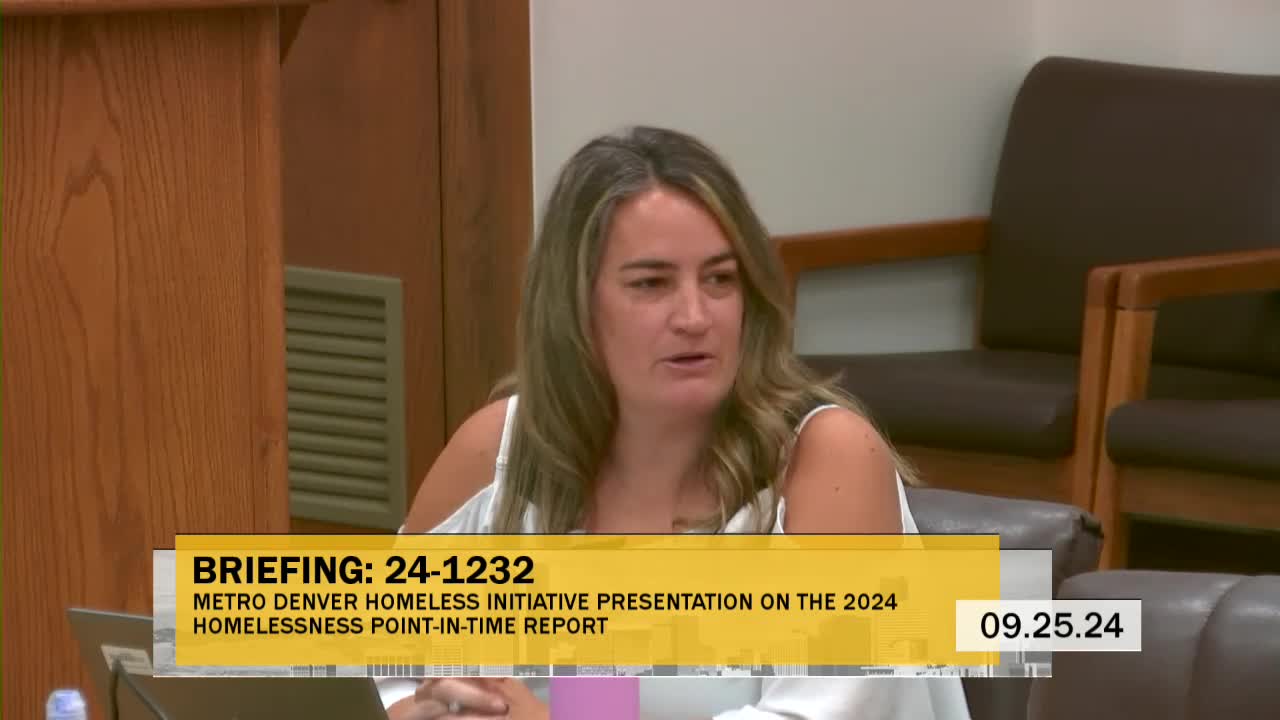Denver reveals alarming rise in homelessness data
September 25, 2024 | Denver (Consolidated County and City), Colorado
This article was created by AI summarizing key points discussed. AI makes mistakes, so for full details and context, please refer to the video of the full meeting. Please report any errors so we can fix them. Report an error »

During a recent government meeting, the Metro Denver Homeless Initiative (MDHI) presented the findings from the annual Point in Time Count, which provides a snapshot of homelessness in the region. Conducted on January 22, the count revealed nearly 10,000 individuals experiencing homelessness across seven counties, including Denver, with approximately 7,000 in shelters and nearly 3,000 unsheltered.
The count, mandated by the Department of Housing and Urban Development (HUD), aims to capture those living in emergency shelters, transitional housing, or places not meant for human habitation. MDHI emphasized that this count is just one measure of homelessness, highlighting the limitations of a single-night snapshot and the importance of ongoing data collection throughout the year.
Key findings from the count indicated that about one-third of those surveyed identified as newly homeless, while another third were classified as chronically homeless. The top reasons for homelessness included job loss, inability to pay rent, and relationship issues. Notably, racial disparities were evident, with Native American and Black populations significantly overrepresented among the homeless.
In Denver County specifically, the count identified around 6,500 individuals, with similar trends in reasons for homelessness and demographic breakdowns. The presentation also noted that recent migrants were excluded from local reporting, which may affect the overall understanding of homelessness trends.
Council members engaged in discussions about the implications of the data, particularly regarding the increase in family homelessness and the need for targeted interventions. Questions arose about the accuracy of the count, with some council members suggesting that the numbers may underrepresent the true scale of homelessness in the area.
MDHI representatives acknowledged the challenges in tracking families and youth experiencing homelessness, particularly those who may be \"doubled up\" in homes or couch surfing, which are not captured in the current count methodology. They expressed a commitment to improving data collection and analysis to better understand the needs of these populations.
The meeting concluded with a call for more comprehensive strategies to address homelessness, including the potential for more frequent counts and targeted support for disproportionately affected communities. Council members emphasized the importance of using the data to inform policy decisions and resource allocation moving forward.
The count, mandated by the Department of Housing and Urban Development (HUD), aims to capture those living in emergency shelters, transitional housing, or places not meant for human habitation. MDHI emphasized that this count is just one measure of homelessness, highlighting the limitations of a single-night snapshot and the importance of ongoing data collection throughout the year.
Key findings from the count indicated that about one-third of those surveyed identified as newly homeless, while another third were classified as chronically homeless. The top reasons for homelessness included job loss, inability to pay rent, and relationship issues. Notably, racial disparities were evident, with Native American and Black populations significantly overrepresented among the homeless.
In Denver County specifically, the count identified around 6,500 individuals, with similar trends in reasons for homelessness and demographic breakdowns. The presentation also noted that recent migrants were excluded from local reporting, which may affect the overall understanding of homelessness trends.
Council members engaged in discussions about the implications of the data, particularly regarding the increase in family homelessness and the need for targeted interventions. Questions arose about the accuracy of the count, with some council members suggesting that the numbers may underrepresent the true scale of homelessness in the area.
MDHI representatives acknowledged the challenges in tracking families and youth experiencing homelessness, particularly those who may be \"doubled up\" in homes or couch surfing, which are not captured in the current count methodology. They expressed a commitment to improving data collection and analysis to better understand the needs of these populations.
The meeting concluded with a call for more comprehensive strategies to address homelessness, including the potential for more frequent counts and targeted support for disproportionately affected communities. Council members emphasized the importance of using the data to inform policy decisions and resource allocation moving forward.
View full meeting
This article is based on a recent meeting—watch the full video and explore the complete transcript for deeper insights into the discussion.
View full meeting
